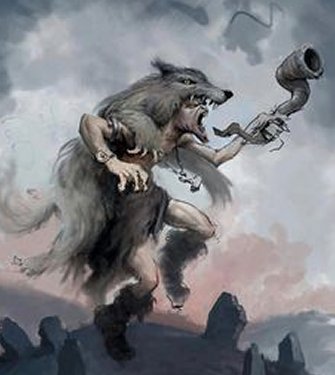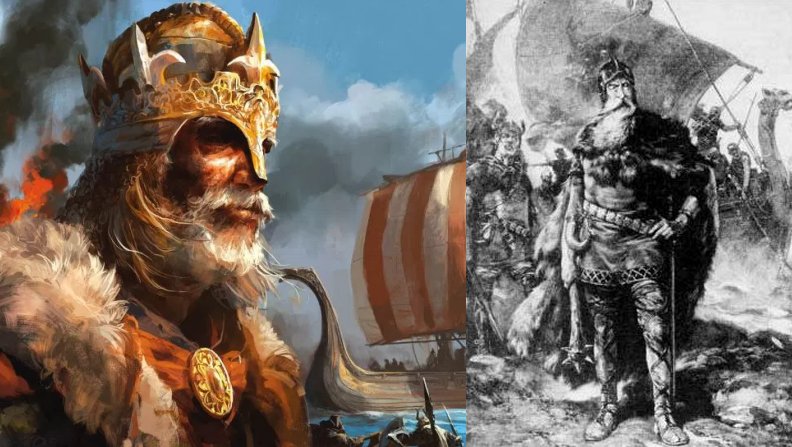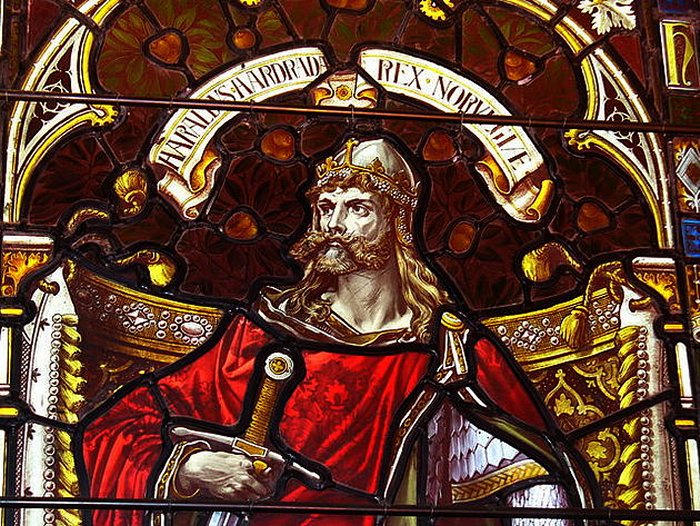Berserkers: Icelandic Viking ‘Mad Warriors’ In The Army Of God Odin
A. Sutherland - AncientPages.com - Icelandic Viking warriors known as ‘berserkers’ (in Old Norse: ‘berserkr’) were feared by enemies and even their battle companions.
These warriors - half-naked and covered in furs - entered into combat in trance, possessed by hatred and blind fury, even without armor or protection. The berserkers did not fear pain and death and they had a strong desire to kill.
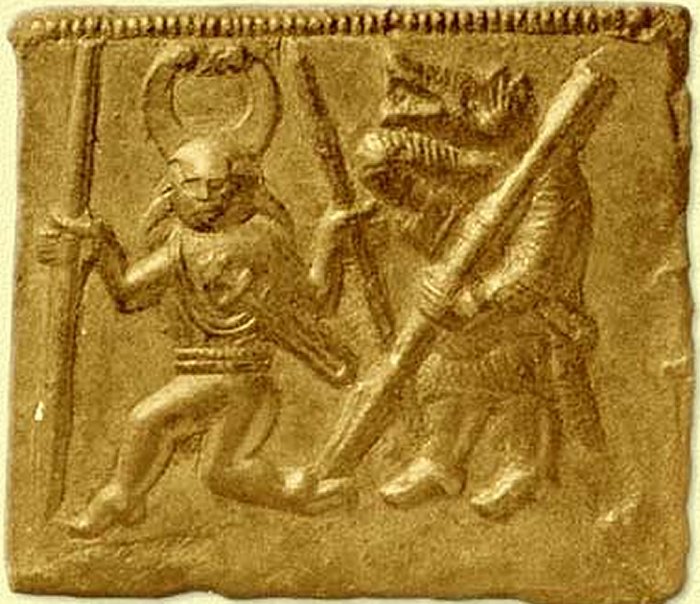
Vendel-period bronze plate discoverd on Öland (Torslunda socken), Sweden. Image credit: Bengans historia sidor_wadbring.com
How did they get the spirit of reckless attack in order to fight madly as they did?
The berserkers are mainly known from Icelandic literature but the most cited source is the "Ynglinga saga" dated to 1220 AD, In his work, Snorri Sturlusson describes berserks as 'mad fighters' without body armor:
"Woden's [Odin's] men went without hauberks and raged like dogs or wolves. They bit their shields and were strong like bears or bulls. They killed men, but neither fire nor iron hurt them…”
See also:
Were The Viking Berserkers True Warriors Or Drug Addicts Fighting In Trance?
Famous Viking Ragnar Lodbrok – Legendary Fearless Sea-King Of The North
Mysterious Jomsvikings: Fearless Scandinavian Warrior-Brotherhood
Vikings: Facts And History About The Tough Norse Seafaring People
What the word ‘berserker’ ("björnsärk") means is uncertain, but one theory proposes a reasonable explanation that the word is related to Odin warrior’s habit of wearing a coat (Old Norse: “serkr”) made from the pelt of a bear (Old Norse: ber-) during their furious battles.
Ivar The Boneless Was A Berserker
Odin’s feared berserkers became a model for later generations of warriors that were insanely brave and feared nothing.
One example can be Ragnar Lodbrok’s son Ivar Ragnarsson widely known as Ivar the Boneless (794-873).
He was exceptionally violent and cruel Viking warlord, reputed to be a berserker.
He was reported to serve as a warrior in Denmark where he was said to lead an army of Berserker warriors.
In the Sagas, Ivar the Boneless is described as being more like a giant than an ordinary man.
His powerful arms were able to carry a bow that was much stronger than those used by other warriors and with heavier arrows.
It happens that not everything that ancient myths and legends tell seems to be only a fantasy.
During an excavation at the churchyard of St. Wystan’s in Repton in Derbyshire, in the East Midlands of England, archaeologists unearthed a skeleton of a 9-foot tall Viking warrior. This discovery made them believe, the remains belong to Ivar the Boneless. Ancient historical sources confirm that in 873, the Great Viking Army led by Ivar Ragnarsson (“the Boneless”) spent the winter in Repton.
Also, the Saga of Ragnar Lodbrok, Ivar’s father, states that Ivar the Boneless was buried in England.
Harald Hardrada Was A Famous Viking Warrior And A Berseker
Another reputed warrior who was believed to be the berserker, was Harald Hardrada “(hard ruler”) officially Harald III Sigurdsson (1015-1066), one of the most famed Viking leaders, who participated in the Battle of Stiklestad in 1030 AD at the age of 15.
Later (but before Hardrada became king of Norway) his Viking army of warriors were employed as protectors of the emperor and Harald became a military commander in Kievan Rus' and of the Varangian Guard in the Byzantine Empire.
Old customs and beliefs in powerful berserkers also survived in the famous medieval legend of Beowulf. Beowulf, a ‘prince of the Geats’ of southern Sweden, arrived with a small group of warriors ready to get rid of Grendel, an evil man-eating monster that is half-man and half-fiend.
To meet the monster on its own terms, he threw off his helmet, (“hauberk”) and sword, but still, his strength was that of thirty men, and he killed Grendel by pulling off one of the monster’s arms.
However, in its later, more Christianized version, mighty Beowulf trusts in God's power, not in strength coming from his altered state of mind, as did Odin’s brave warriors in the past.
Written by – A. Sutherland AncientPages.com Staff Writer
Copyright © AncientPages.com All rights reserved. This material may not be published, broadcast, rewritten or redistributed in whole or part without the express written permission of AncientPages.com
Expand for referencesReferences:
D. Clark,N. Perkins, Anglo-Saxon Culture and the Modern Imagination
Hightower, L. The Vikings: Raiders
Brownworth, L. The Sea Wolves
More From Ancient Pages
-
 Madame de Pompadour – Powerful And Hated Mistress – Sex, Manipulation And Intrigue In Versailles
Featured Stories | Jul 12, 2018
Madame de Pompadour – Powerful And Hated Mistress – Sex, Manipulation And Intrigue In Versailles
Featured Stories | Jul 12, 2018 -
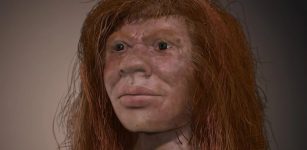 Mysterious Denny – 90,000-Year-Old Child Whose Parents Were Two Different Human Species
Featured Stories | Jul 25, 2023
Mysterious Denny – 90,000-Year-Old Child Whose Parents Were Two Different Human Species
Featured Stories | Jul 25, 2023 -
 Fascinating Virtual Avatar Of Mysterious Egtved Girl Created – What Is Her Story?
Archaeology | Dec 19, 2022
Fascinating Virtual Avatar Of Mysterious Egtved Girl Created – What Is Her Story?
Archaeology | Dec 19, 2022 -
 Evolution Might Stop Humans From Solving Climate Change – Researchers Say
Evolution | Jan 3, 2024
Evolution Might Stop Humans From Solving Climate Change – Researchers Say
Evolution | Jan 3, 2024 -
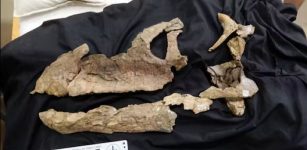 First Near-Complete Sauropod Dinosaur Skull Found In Australia Hints At Ancient Links Between Continents
Featured Stories | Apr 13, 2023
First Near-Complete Sauropod Dinosaur Skull Found In Australia Hints At Ancient Links Between Continents
Featured Stories | Apr 13, 2023 -
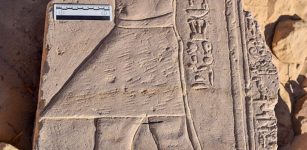 2nd Century Roman Temple Unearthed In Aswan, Egypt
Archaeology | Feb 23, 2018
2nd Century Roman Temple Unearthed In Aswan, Egypt
Archaeology | Feb 23, 2018 -
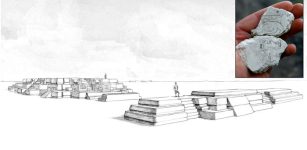 Oldest Evidence Of Maya Calendar Discovered In Guatemala
Archaeology | Feb 6, 2023
Oldest Evidence Of Maya Calendar Discovered In Guatemala
Archaeology | Feb 6, 2023 -
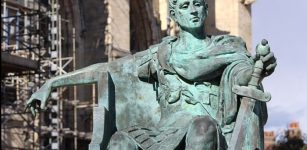 On This Day In History: Emperor Constantine I Passes His Famous National Sunday Law – On March 7, 321 AD
News | Mar 7, 2017
On This Day In History: Emperor Constantine I Passes His Famous National Sunday Law – On March 7, 321 AD
News | Mar 7, 2017 -
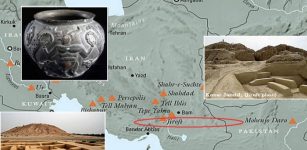 Jiroft’s Konar Sandal – Home To A Huge Ziggurat And Many Ancient Treasures
Featured Stories | Jun 8, 2021
Jiroft’s Konar Sandal – Home To A Huge Ziggurat And Many Ancient Treasures
Featured Stories | Jun 8, 2021 -
 Afterlife Of Egyptian Religious Statues Intentionally Hidden In The Temple Of Ptah At Karnak
Archaeology | Sep 22, 2017
Afterlife Of Egyptian Religious Statues Intentionally Hidden In The Temple Of Ptah At Karnak
Archaeology | Sep 22, 2017 -
 10 Ancient Shipwrecks And Several Underwater Artifacts Found Around The Island Of Kasos
Archaeology | Mar 14, 2024
10 Ancient Shipwrecks And Several Underwater Artifacts Found Around The Island Of Kasos
Archaeology | Mar 14, 2024 -
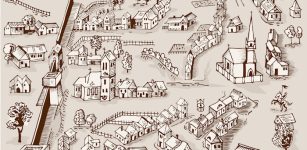 Wolstenholme Towne: Lost Virginia Settlement – Destroyed, Abandoned And Forgotten
Featured Stories | Jun 26, 2018
Wolstenholme Towne: Lost Virginia Settlement – Destroyed, Abandoned And Forgotten
Featured Stories | Jun 26, 2018 -
 Mysterious Devil’s Footprints In Maine – An Ancient Mystery That Will Never Be Solved
Featured Stories | Jul 9, 2017
Mysterious Devil’s Footprints In Maine – An Ancient Mystery That Will Never Be Solved
Featured Stories | Jul 9, 2017 -
 Bees Originated From An Ancient Supercontinent Millions Of Years Earlier Than Previously Thought
Evolution | Jul 31, 2023
Bees Originated From An Ancient Supercontinent Millions Of Years Earlier Than Previously Thought
Evolution | Jul 31, 2023 -
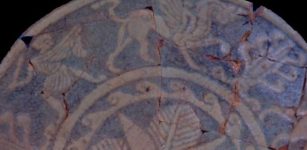 Scientists Reveal What Egyptian Faience Have To Do With Gold
Archaeology | Dec 17, 2022
Scientists Reveal What Egyptian Faience Have To Do With Gold
Archaeology | Dec 17, 2022 -
 Controversial Discovery Of Rama’s Bridge – A 1,700,000 Year Old Man-Made Structure
Featured Stories | Jun 19, 2014
Controversial Discovery Of Rama’s Bridge – A 1,700,000 Year Old Man-Made Structure
Featured Stories | Jun 19, 2014 -
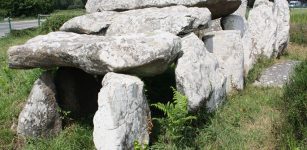 Mysterious Megalithic Stones Of Carnac, France – An Unsolved Neolithic Enigma
Civilizations | Oct 12, 2018
Mysterious Megalithic Stones Of Carnac, France – An Unsolved Neolithic Enigma
Civilizations | Oct 12, 2018 -
 Ancient Inscriptions Of Babylonian King Nabonidus Discovered In Saudi Arabia
Archaeology | Jul 14, 2021
Ancient Inscriptions Of Babylonian King Nabonidus Discovered In Saudi Arabia
Archaeology | Jul 14, 2021 -
 On This Day In History: Great Sheffield Flood – Largest Man-Made Disaster Occurred In England – On Mar 11, 1864
News | Mar 11, 2017
On This Day In History: Great Sheffield Flood – Largest Man-Made Disaster Occurred In England – On Mar 11, 1864
News | Mar 11, 2017 -
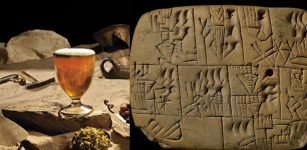 World’s Oldest Paycheck Reveals Ancient Sumerian Workers Were Paid In Beer
Ancient History Facts | Nov 22, 2018
World’s Oldest Paycheck Reveals Ancient Sumerian Workers Were Paid In Beer
Ancient History Facts | Nov 22, 2018

